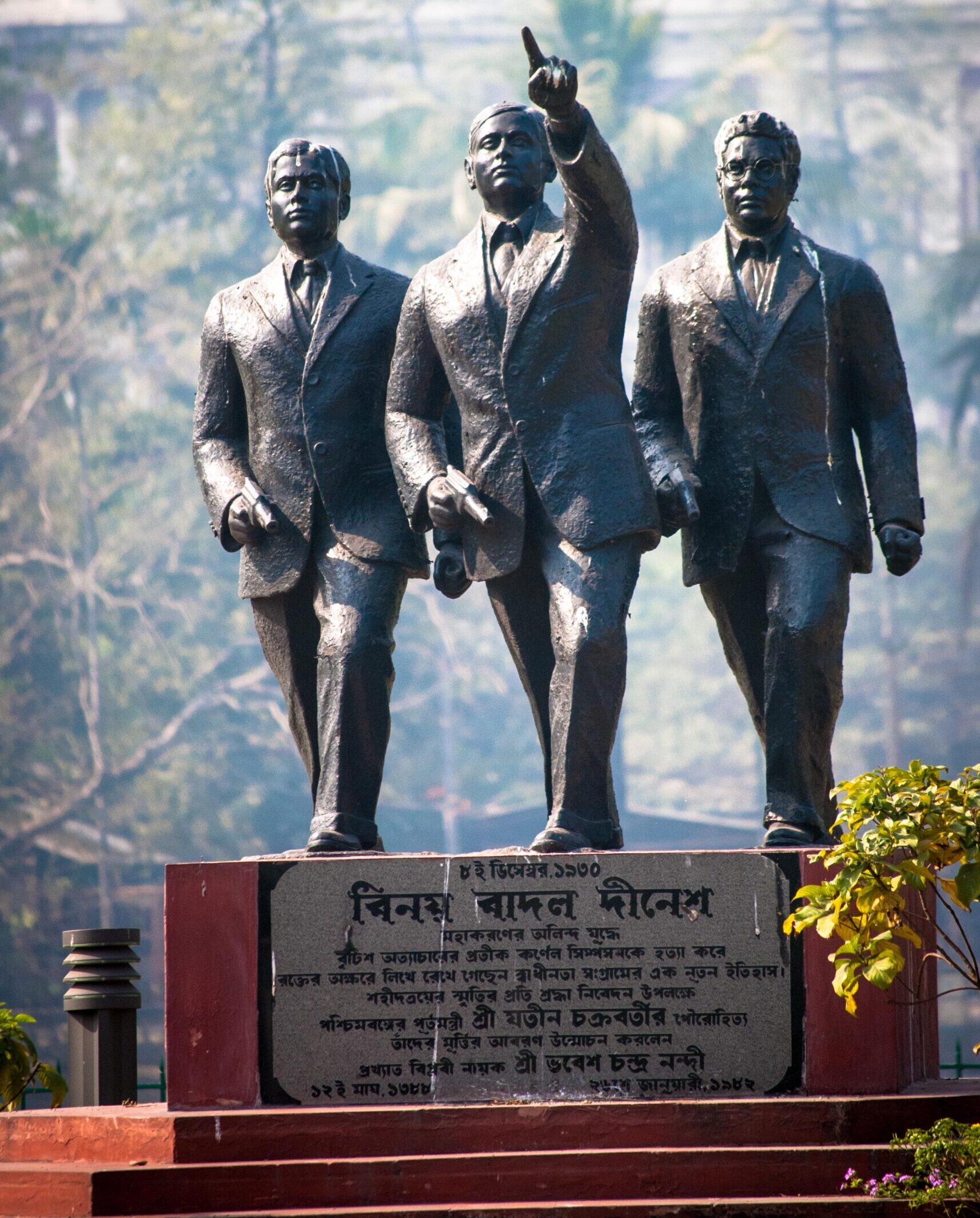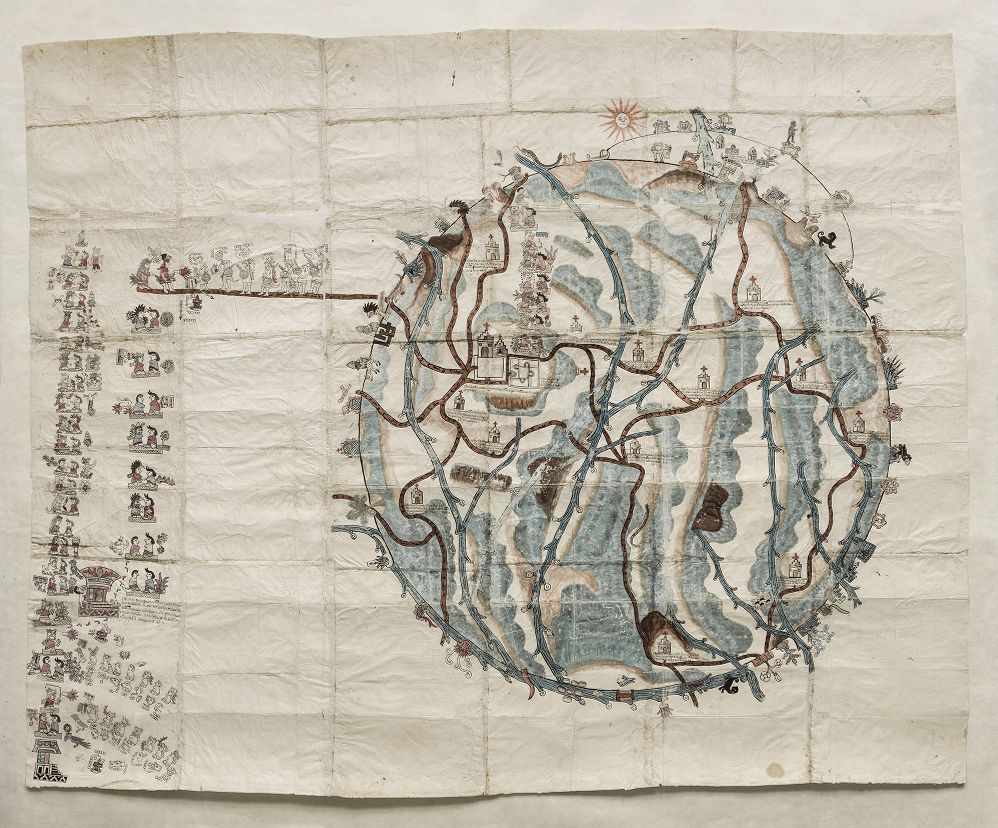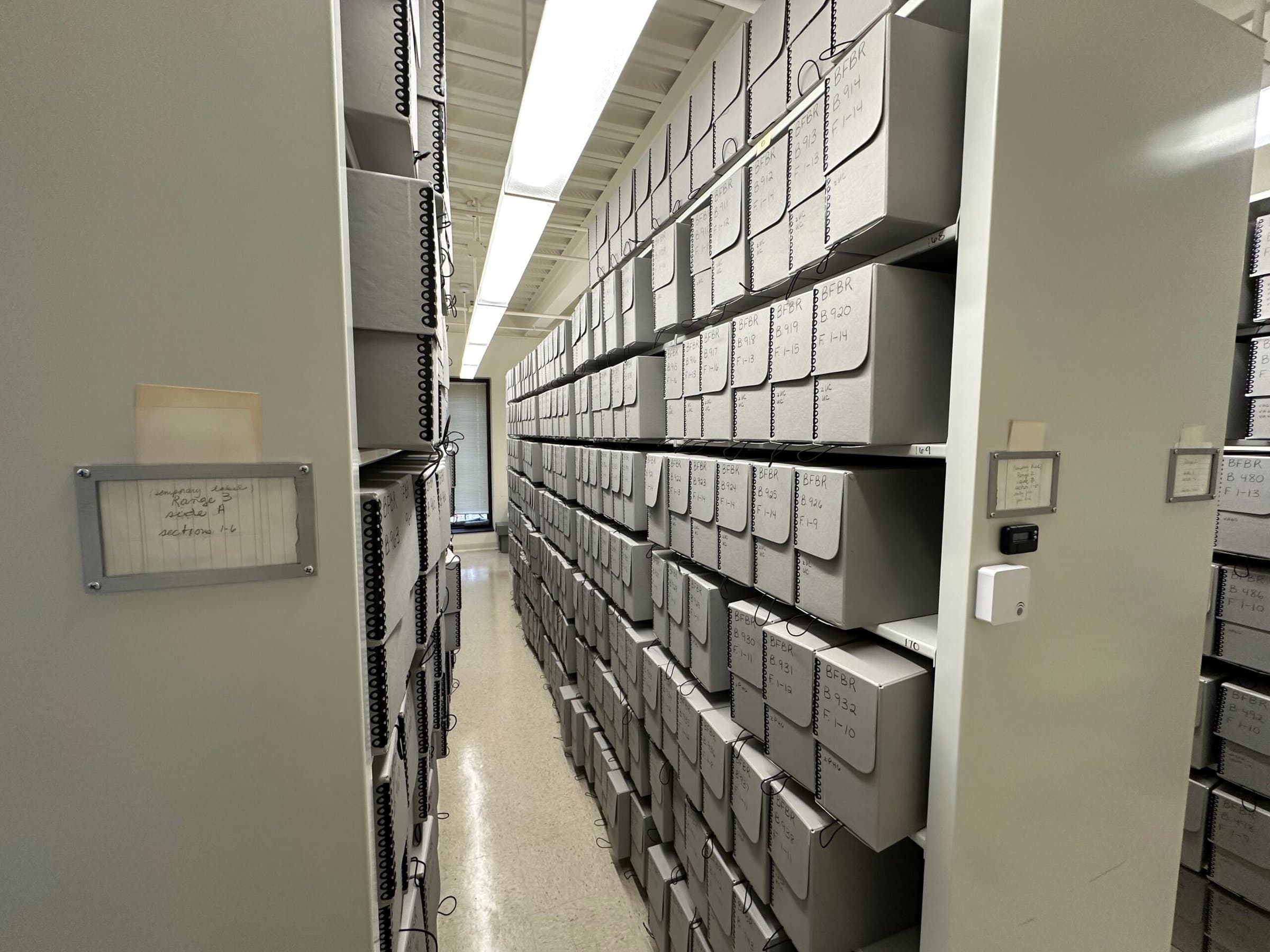On January 10, 1980, Judge Harold Greene of Federal District Court in Washington, D.C., handed down a decision of great importance to the historical profession. He ordered the Federal Bureau of Investigation (FBI) to cease the destruction of its files until it has submitted to the Court “detailed records retention plans and schedules, encompassing both headquarters and field office files.” This plan, according to the court order, must be based upon “inspection of FBI files by trained archivists and historians.” The ban on file destruction remains in effect until the Court shall have approved such records retention plans.
The Court’s injunction was the result of a suit filed in 1979 against the FBI, the Archivists of the United States, and the Attorney General. Among the organizations bringing the suit were the American Friends Service Committee, the Center for National Security Studies, Historians for Freedom of Information, and The Nation magazine. Coordination and legal services were provided by the Fund for Open Information and Accountability, Inc., an organization that came into being in 1977 to help facilitate public access to federal agency files. Individual historian plaintiffs included William Appleman Williams (Univ. of Oregon), Blanche Weisen Cook (John Jay Coll. for Criminal Justice), Richard A. Falk (Princeton Univ.), Harold Fruchtbaum (Columbia Univ.), and John Anthony Scott (Rutgers Univ.).
In its opinion the Court ruled that responsibility for the massive and unauthorized destruction of files in which the FBI has been engaged since 1975 rests in part with the Archivist of the United States. It is his duty to establish records management procedures and guidelines for the selective retention of agency documents believed to have historical or other value. But, said the Court,
“The Archivist and those under his supervision have failed for a period of over thirty years adequately to carry out these statutory and regulatory responsibilities with respect to the records of the Federal Bureau of Investigation.”
In all those years, the Court pointed out, never “did a single employee of the Archives see a single FBI file. All decisions were made on the basis of representations of the FBI [which were] in some respects incorrect, and in all respects unverified.”
At the trial that took place beginning October 22, 1979, leading Archives officials argued that they were capable of approving FBI’s file destruction plans without seeing the documents involved. Judge Greene characterized this position as “incredible.” The law, he said,
“imposes upon the Archivist and his staff important responsibilities concerning the selection of what, among the files of an agency, may have permanent or continuing value for historical research, legal rights, and other purposes. It strains credulity to accept the proposition that such decisions can be made wholly by remote control.”
Neglect of his responsibilities by the Archivist, in short, “fatally flaws the legality of any further destruction of records by the FBI.”
Judge Greene underscored the gravity of his conclusion by pointing out the unique significance of the FBI as a repository of historical records. Its files, he said, “perhaps more than those of any other agency constitute a significant repository of the record of the recent history of this nation, and they represent the work product of an organization that has touched the lives of countless Americans.. . . The files of such an agency contain far more of the raw materials of history and research and far more data pertaining to the rights of citizens than do the files of bureaus with more pedestrian mandates. The public interest demands that great care be taken before such records are committed to destruction.”
But the present battle for the conservation of historically significant FBI files, we may suggest, involves more than the FBI itself. It has to deal ultimately with the way in which the entire vast body of documents generated annually by the federal government is to be handled, examined, selectively conserved, and properly located to facilitate public access. Without a skilled, professional, and above all independent approach to this work, neither the history of this country nor that of the agencies themselves will ever be able to be truly written. “The lessons of history,” as Judge Greene remarked in his opinion, “can hardly be learned if the historical record is allowed to vanish.”
And what of the motives in back of this destruction of irreplaceable historical records? Some plaintiffs in their affidavits to the Court argued that the destruction program had been undertaken to conceal “improprieties” in the past behavior of FBI officials and agents. Without necessarily accepting this contention the judge noted that “it appears the agency’s concerns were more modestly limited to minimizing the administrative difficulties involved in handling [Freedom of Information Act] requests.”
The suit against the FBI and its program of file destruction has, indeed, been closely linked with the effort to defend the Freedom of Information Act, and to promote its widest possible utilization both as an instrument of historical research and of federal accountability for agency activities.
FOIA was originally passed in 1966. It is regarded by civil libertarians as a milestone in giving statutory recognition to the right of freedom of access—to the concept that the First Amendment includes not only a right to communicate, but also to have access to, ideas and information. The Act provided that, in principle, the huge treasury of federal records must be made available to the public for its scrutiny and use. The Act, to be sure, permitted certain exceptions (trade secrets, national security, etc.), but henceforth disclosure was to be the rule, nondisclosure the exception.
Nineteen sixty-six, then, saw the appearance of a tool of great potential value to the public seeking information as to how its government works and to the historian seeking to scrutinize the historical record. Some governmental agencies sought to fulfill the spirit and the letter of the law; others were opposed to FOIA from the start. They followed tactics of evasion, defiance, and delay that helped in many cases to reduce the provisions of the Act to a dead letter. Hearings initiated by Representative William S. Moorhead in 1971 uncovered massive evidence of footdragging on the part of Washington officialdom.
Then, in 1973, came Watergate. Relentless judicial and congressional investigation exposed the inner secrets of the president’s office and of presidential misdeeds. In the process public confidence in the operations of government sustained a heavy blow. Clearly, if the investigation of the president himself revealed wrongdoing, was it not important, in terms of official accountability and the survival of democracy, to apply the same principle of public disclosure to the president’s agencies as well?
So the demand arose, both in the country and in Congress, for a Freedom of Information Act with teeth in it. In the spring of 1974 amendments to the 1966 Act were laid before Congress and passed through both Houses in the first week of October. The Freedom of Information Act as revised became law in 1975 as a legislative weapon against the abuse of power of which Watergate was, and is, the symbol.
From 1975 until the present, business companies, public interest organizations, and private citizens have flocked to avail themselves of FOIA and to secure access to hitherto secret government documents.
In 1975, for example, Robert and Michael Meeropol initiated a suit to compel FBI disclosure of the immense file relating to the prosecution of their parents, Ethel and Julius Rosenberg. Two and one half years of litigation netted them some 135,000 documents out of an estimated 250,000 in the keeping of the FBI. This material was a relatively modest harvest, but it has already proved of great value to historians of the Cold War.
The Union of Concerned Scientists has used FOIA to compel the Nuclear Regulatory Commission to disclose its “Nugget File.” A highly secret file detailing no less than 230 failures and accidents that occurred at nuclear power plants throughout the country from 1966 through 1976, the “Nugget File” reveals to the public the hazards presented by the operation of an improperly supervised nuclear power industry.
FOIA, then, has already made possible the disclosure of documents of historical, scientific, and public value. But along with public access to the hitherto secret record has come the revelation of governmental blunders and misdeeds. Officials have even initiated and carried through entire programs in defiance of the Constitution and the Bill of Rights. The most notorious example has been the complex Cointelpro (Counterintelligence Program) developed by the FBI during the civil rights movement of the 1960s. On August 25, 1967, J. Edgar Hoover instructed his field offices “to expose, disrupt, discredit, or otherwise neutralize the activities” of a number of civil rights organizations that included the Student Nonviolent Coordinating Committee, the Congress of Racial Equality, and the Southern Christian Leadership Conference.
In this general context it is understandable that portions of federal officialdom did not relax their opposition to FOIA in 1975. On the contrary, they redoubled their efforts to nullify the Act and to bring about its repeal. The FBI, in particular, embarked on a program of file destruction that, if carried to completion, would have brought about the de facto repeal of FOIA by unilateral decision of the FBI itself.
John S. Rosenberg, writer and historian, was the first to blow the whistle. In 1977 Rosenberg sought the files of the noted civil rights lawyer, Clifford Durr, from the Mobile Alabama field office of the FBI—only to be informed that the files had been destroyed at about the same time that he made his request. His disquieting story “The FBI Shreds Its Files: Catch in the Freedom of Information Act,” appeared in The Nation, February 4, 1978.
Stories of file destruction, not only by the FBI but other agencies as well, continued to seep out of Washington in 1978. FBI agents themselves raised bitter complaints. The files of the FBI were being shredded, said one of these informants, “because of a deluge of requests from the public to see [them].” At the end of 1978 the historical profession began to react to what now came to be identified as a clear and present danger to the profession itself and to the public interest. In December 1978 Historians for Freedom of Information (HFOI) was formed with the support of members of AHA and OAH in all parts of the country. Among the goals of HFOI was “to make known to the historical community facts concerning the destruction of files from important government agencies and to publicize attacks upon and threats to the Freedom of Information Act.” HFOI’s statement of purpose was circulated at the annual meeting of the AHA at San Francisco in 1978. It called upon the profession to involve itself in the effort to halt unauthorized destruction of files, and to promote an intelligent policy of file preservation.
In the spring of 1979, HFOI, with 200 supporters, entered the suit against the FBI, reporting the progress of the suit in its occasional bulletins. Swift victory in this action, at District Court level, opens up not only for HFOI but for the entire profession new opportunities for proper archival conservation, and new obligations.
Judge Greene’s decision allows us the time to evaluate the situation and decide how best to use our initiative to ensure the formulation of realistic records retention plans. Here the public interest and that of the historical profession are identical. Historians are now placed in the unique position, and indeed given the duty, to speak out for the public and to act as its champion. In this work we need close cooperation of the professional organizations most nearly involved—AHA, OAH, HFOI, and the Society of American Archivists.
The government has not yet decided whether to appeal the court’s decision, but an appeal may confidently be expected. The battle in the federal courts, therefore, is likely to go on. Historians, it is hoped, will support the plaintiffs in the continuing legal process, will associate themselves with this effort, and will contribute badly needed funds.
The attack by officialdom on the Freedom of Information Act takes many forms; we may confidently expect new and numerous such attacks, and should prepare firmly to oppose efforts to whittle down the scope of FOIA or to repeal it directly or indirectly. We need to raise our voices against clauses in the proposed FBI Charter that would authorize the FBI to destroy currently accumulating files at their own discretion. We need to mobilize opposition to the new flood of bills now being placed in the Congressional hopper that would exempt one agency after another from the jurisdiction of FOIA.
Requests for further information, and documentation, including Judge Greene’s opinion, may be obtained from HFOI; people may also have their names placed upon the mailing list to receive the Bulletin. Information and experience of historians with reference to efforts to obtain access to agency documents are solicited. Address communications to Harold Fruchtbaum (Acting Secretary), Columbia University School of Public Health, 600 West 168th Street, New York, NY 10032.
John Anthony Scott is chairman of Historians for Freedom of Information.


